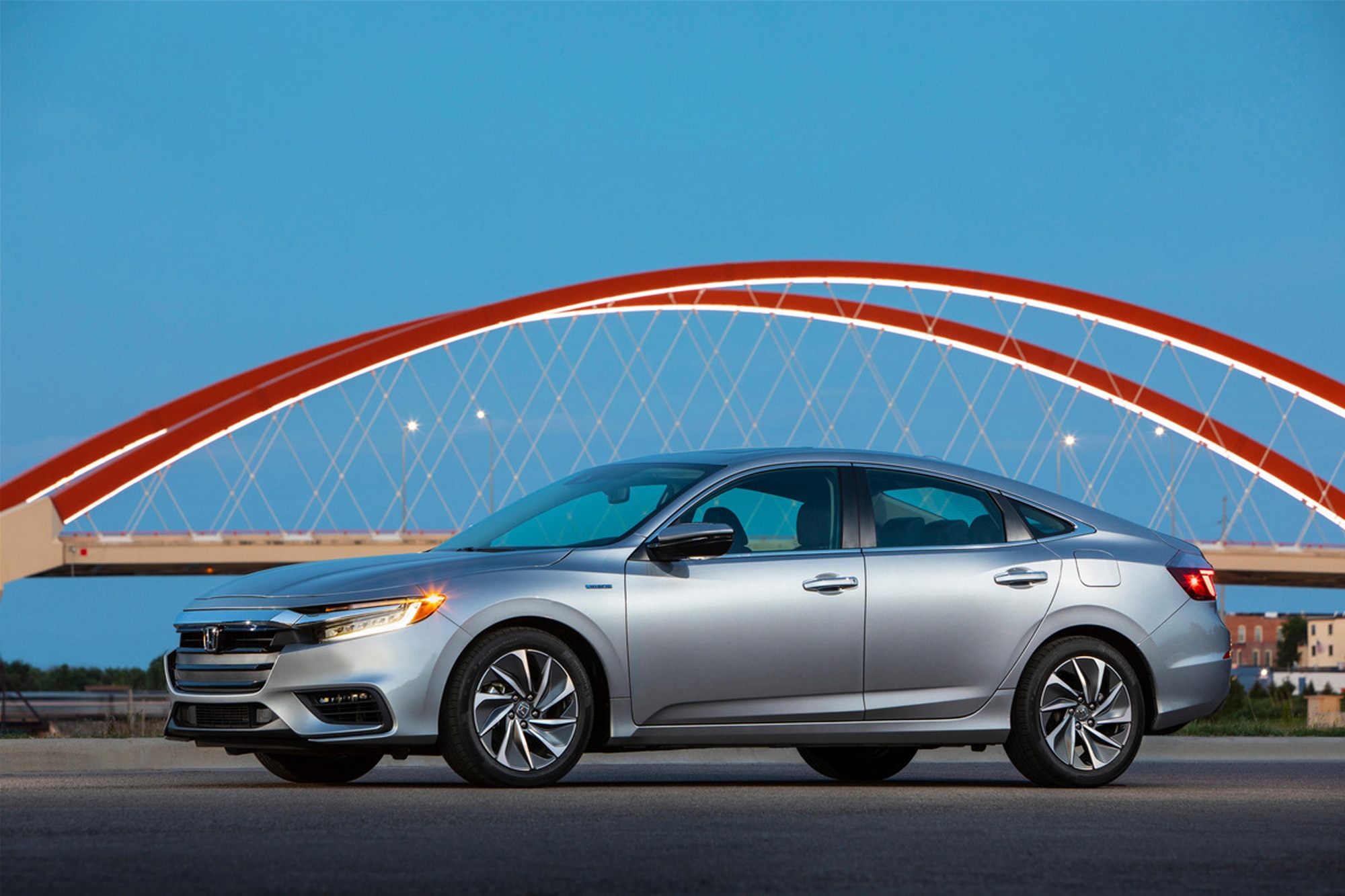What Is a Compact Car?
One size up from vehicles in the dying subcompact class, these small cars offer decent room and plenty of desirable features for shoppers on a budget.
 Honda
Honda
Compact cars — like all passenger cars — have lost market share to crossovers in recent years. However, they remain a great option for many thanks to their affordable base prices, decent fuel economy, reasonably-sized cargo holds, and well-trimmed cabins. In this segment, you’ll find hatchbacks and sedans (with some models offering both body styles), plus a couple of models with all-wheel drive. Some manufacturers even offer enthusiast-oriented models with manual transmissions and more powerful engines.
Which Brands Sell Compact Cars?
Ford, Dodge, Chevrolet, and Chrysler have all pulled out of the compact-car market to focus on larger vehicles, but most mainstream Japanese, Korean, and German automakers continue to offer them. The Honda Civic, Toyota Corolla, Nissan Sentra, and Hyundai Elantra are among the most popular, but the Honda Insight, Kia Forte, Mazda3, Subaru Impreza, and Volkswagen Jetta also belong in this segment.
How Much Does a Compact Car Cost?
The Subaru Impreza is among the most competitively-priced compact cars on the market in 2022 with a base of $19,790. Other sedans start close to that in the low $20,000s, while hatchback and hybrid models cost a little more.
Well-equipped compacts can exceed $30,000 but often include features like heated seats, a digital gauge cluster, and adaptive cruise control. Some even have head-up displays and enhanced connectivity features, like the ability to use your phone as the key.
Additionally, the segment includes a few sporty variants such as the Subaru WRX and WRX STI; the Honda Civic Si and Type R; the Hyundai Elantra N; and the Volkswagen Jetta GLI, Golf GTI, and Golf R. These range in price from $26,000 to $40,000.
How Big Is a Compact Car?
Currently, the longest compact car stretches to 186 inches, though hatchback models can fall well short of that. All have at least 12 cu.-ft. of storage space behind the rear seats. Hatchbacks tend to have larger cargo holds than sedans, but often at the expense of passenger space. While most compact cars feature four doors and seats for five, some adults may feel crammed in the back.
What Kind of Fuel Economy Does a Compact Car Get?
Vehicles in this segment are pretty efficient, with even non-hybrid models achieving about 40 mpg on the highway and 30 mpg in the city. Hybrid-powered compact cars are fuel-economy stars, returning combined figures of 50 mpg and above, whereas higher-performance, sporty variants tend to see combined figures below 30 mpg.
Written by humans.
Edited by humans.
 Sami Haj-Assaad
Sami Haj-AssaadSami Haj-Assaad is an award-winning automotive journalist who has contributed to several automotive, electric vehicle, luxury lifestyle, and technology publications. His work isn't just limited to the written word, as he's also hosted YouTube videos and podcasts. Having grown up in the '90s, he has a strong sense of attachment to that era's style, though he also loves to geek out about the modern, futuristic tech and powertrains rolling out today.
Related articles
View more related articles